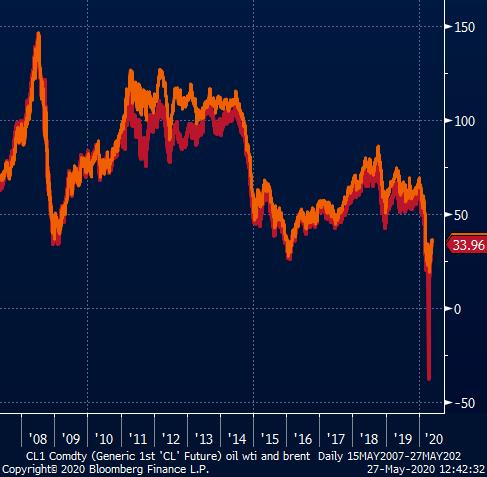COVID-19 is proving bad news for EV projects

As companies seek to cut costs globally, expensive electric vehicle projects are being knocked off the agenda.
The uptake of EVs has been on the rise in the last decade, forcing traditional carmakers to invest billions to keep up with relatively new players like Tesla and long standing competitors.
Yet the uptake of EVs has been particularly slow globally and is projected to drop this year. Bloomberg New Energy Finance forecasts 1.7 million EVs will be sold in 2020, an 18 per cent reduction over 2019.
Wood MacKenzie is even more pessimistic and is warning of a 43 per cent drop in sales.
For now, no automobile maker has publicly given its future plans the boot.
But manufacturers have warned these are tough times with lockdowns impacting their factories and skyrocketing unemployment impacting consumer spending power.
French manufacturer Renault is seeking a €5bn ($8.3bn) bailout and the country’s finance minister, Bruno Le Maire, has conceded that without the package the company could go under.
Volkswagen CEO Herbert Diess continues to reaffirm Volkswagen’s commitment to electrification. But warned the task at hand was to “get business back on track responsibly”.
Even market leader Tesla has seen production hiccups, having been forced to briefly close its production plant in Fremont, California.
With EVs being low volume and yet to be profitable, they are easy targets for production cuts.
“When you’re digging out of this crisis, you’re not going to try to do that with unprofitable and low-volume products, which are EVs,” Bloomberg Intelligence analyst Kevin Tynan said.
EVs already losing their appeal
For many years, EVs were gradually becoming more appealing to consumers.
One reason is that the cost of purchasing and maintaining an EV and its components substantially dropped in the last decade.
While the latter was still higher than oil prices have been since the GFC, there was speculation the gap would narrow further.
But the plunge in oil and gas prices, beyond anything seen since the GFC, has widened the gap again.

Also, EVs typically sell at a premium and they may be difficult to justify for many consumers, particularly those that have lost jobs or income.
China will be critical
With China being one of the world’s largest adopters and at a later stage of COVID-19 recovery than other economies, it is likely to be a critical market.
Prior to COVID-19, EVs made up 5 per cent of China’s car sales. Volkswagen’s Diess said China would be “the engine of success” for his company.
However, that market may not escape the global loss of interest in EVs.
While Bloomberg New Energy Finance thinks China will make up more than half of 2020’s EV sales — 932,000 — this target is a 14 per cent fall from 2019.
China was due to cut EV subsidies but last month announced they would be extended until 2022.
There has been speculation that more measures may follow in coming days to help as the National People’s Congress meets.
One analyst bullish on EVs is Jing Yang, Fitch director of corporate research in Shanghai.
While she says,”over the medium-to-long term, the focus will still be on the EV side,” she also thinks the government may help internal combustion engine vehicle makers too — at least to give them a chance to survive the worst of the crisis.
Related Topics
UNLOCK INSIGHTS
Discover the untold stories of emerging ASX stocks.
Daily news and expert analysis, it's free to subscribe.
By proceeding, you confirm you understand that we handle personal information in accordance with our Privacy Policy.








